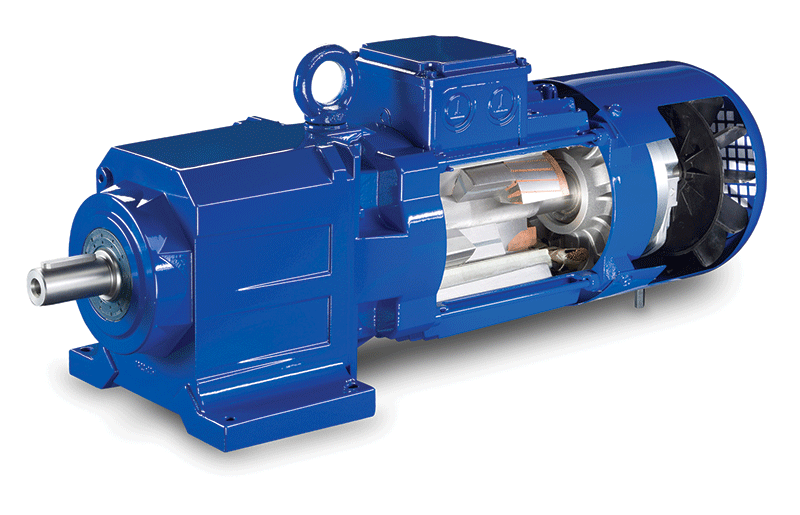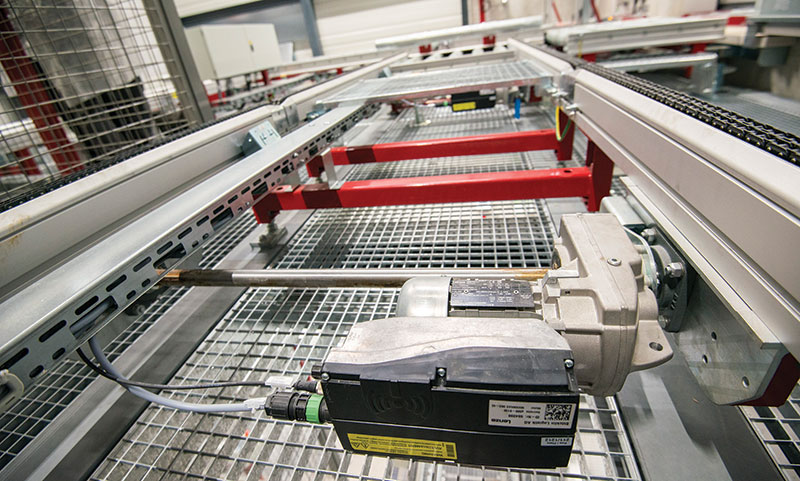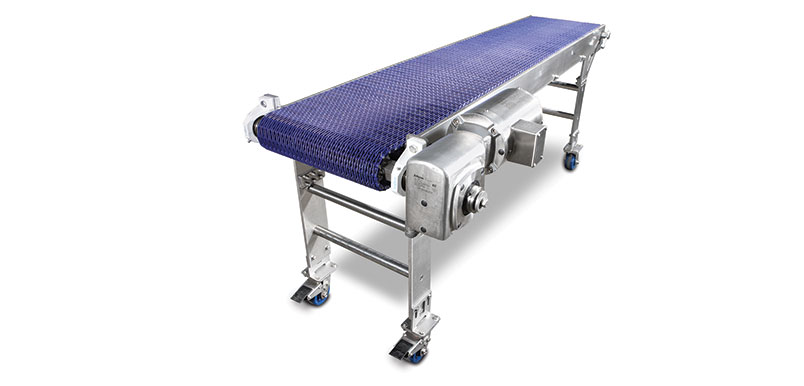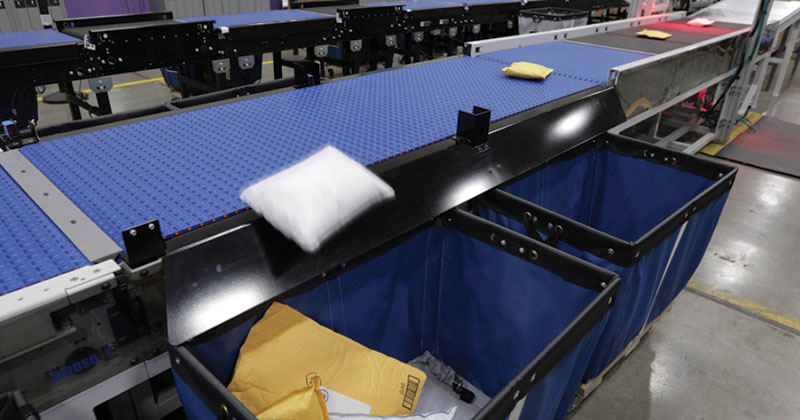A fresh look at power transmission
If you’ve left decisions about conveyor motors, gearboxes and the like to your OEM, now would be a good time to reconsider. Many end users are starting to get more involved as the options from hardware to data management place new pressures on how power transmission equipment keeps your facility running.
Until just recently, it’s been fairly easy to overlook motors, gears and gear boxes on materials handling equipment.
For the longest time, original equipment manufacturers (OEMs) of everything from conveyors to automated storage and stretch wrapping equipment have done all the heavy lifting, so to speak. They choose the power transmission equipment needed for the application, which takes most if not all of the decision making away from buyers like you. What could be easier?
That approach has been quite successful over the years. OEMs make sure equipment is outfitted with highly reliable, cost-effective power transmission components. Let’s face it, there’s not a lot of give here. Once power transmission equipment gets turned on, it just needs to run. Continuously.
“Warehouse applications in particular demand 24/7 operation for extended periods of time. That is the baseline,” says Mike Stegmann, business development manager at Boston Gear, part of Altra Industrial Motion. “Furthermore, warehouse layouts tend to be intricate with highly restricted access to power transmission equipment that places heavy pressure on maintenance accessibility,” Stegmann adds.
...warehouse layouts tend to be intricate with highly restricted access to power transmission equipment that places heavy pressure on maintenance accessibility,” Stegmann.
And while the operating specifics haven’t changed, three major shifts are underway in power transmission equipment as you read this.
First, and perhaps most important, end users are becoming more involved in the power transmission specification process. A singular reliance on OEMs to make the decisions here is waning.
Second, the technology of power transmission is changing. While it hasn’t exactly been one size fits all, power transmission equipment has traditionally been more monolithic than it will be going forward. This shift starts with new equipment and system design to power and drive conveyors and other equipment.
Third, new data and control networks are beginning to become a factor in monitoring and controlling motors and gear boxes to maximize energy efficiency, operational performance and maintenance cycle monitoring, says James Chandler, key markets manager at NORD Drivesystems.
In no small part, this shift also involves digitization of power transmission equipment performance data. The Internet of Things (IoT) and the Cloud are the future here as data is collected at the point of use and shared across networks that monitor performance and condition of motors and the like.
“The outcome of these shifts is that users of materials handling equipment will get more from their equipment with these enhancements to power transmission,” says Ruben Ortiz, product marketing manager at Mitsubishi Electric Automation. “And at the highest level, end users will have the ability to collect data from each and every power transmission component in the facility, and visualize the performance of the facility as a whole,” he adds.

Making the transition
An immediate question here is: Exactly how broad is this shift?
“What’s going on here moves power transmission from a gearbox and a motor to a full solution from the shaft to the Cloud,” explains Brandon Marcellis, application engineer at Lenze.
The next question is: How far along is this transition?
“End users started to ask for more performance from power transmission about five years ago,” says Chandler. “They’ve increased the pressure in the past three years and especially in the past 18 months.”
Which brings us to: What percentage of end users are actively engaged in power transmission decisions?
“Less than 5% are anywhere nearly fully engaged. Probably 15% to 20% are on the path,” says Dan Zachacki, product manager for servo products at Mitsubishi Electric Automation.
He continues on to say that the greatest activity is with larger companies, especially those in consumer package goods and automotive. “With smaller and medium sized companies, it is very much hit or miss,” adds Zachacki.

Managing the change
At first glance, moving from simple decision making by OEMs to almost custom power transmission solutions based on application can be daunting to end users. But it doesn’t have to be.
“In reality, the shift is all about power transmission equipment that’s more integrated, more compact, more energy efficient and easier to install,” explains Brad Gossard, general manager of conveying at Regal Rexnord, Motion Control Solutions.
To his point, here are two examples of what’s going on.
Joseph Bierschbach, technical manager for gearing at Regal Rexnord, likes to start with a simple gear box and motor for a conveyor. A properly paired gearbox, motor and drive provides the most efficient, reliable and compact footprint.
Worm gears, which continue to be used extensively today, do experience efficiency reductions due to their design, which limits where they are typically mounted on conveyors. For higher efficiency, Bierschbach suggests a helical hypoid gear box paired with a compatible motor. “The shift makes power transmission as compact as possible while maximizing energy efficiency without sacrificing integration or ease of installation,” explains Bierschbach.
Meanwhile, Lenze has come up with a smart conveyor calculator to help reduce total motor costs and customize decentralized solutions, says Christopher Moskaites, product manager of electromechanical at Lenze. The calculator takes into account the controls cabinet configuration, length of conveyor, number of conveyor modules and the length of the cable from the drive to the cabinet.
Moskaites explains that the calculator helps maximize power transmission design, especially with Lenze’s Smart Motor. Known as the m300, the Smart Motor’s freely adjustable speed reduces the number of different drive versions by 70%. It also reduces wiring requirements and can be operated from a cell phone. Specifications like those tick a lot of boxes in the current evolution of power transmission equipment.
The control cabinet footprint and power distribution across the system is an area of broad interest, according to Doug Schuchart, materials handling and intralogistics manager at Beckhoff Automation. An example here is Beckhoff’s MX-S system that supports plug-and-play modules in watertight IP67 protection for direct mounting without a cabinet. This approach, he adds, combines high-level automation functionality with reduced equipment and installation costs.
It’s also worth noting that in almost every discussion here, energy efficiency and sustainability figure prominently. Energy efficiency has always been a concern with power transmission.
After all, the purpose of a motor is to take energy and turn it into torque rather than heat, which is actually a loss of energy in this case. And all the experts agree the current focus on sustainability in all of our lives has only made energy efficiency in power transmission equipment of continued high importance.

Shifting the center
The idea of decentralized control solutions is clearly gaining favor. However, the concept is a little confused if not contradictory right now. Or as Schuchart politely puts it, “centralized control means different things to different people.”
The part everyone can agree on is the need to decentralize sensors and other devices monitoring performance and condition of power transmission equipment. Flexibility required to accommodate continuous change in consumer demand is a driving force here. As was said earlier, the need is to build a decentralized Internet of Things (IoT) system that delivers data from each individual component. Exactly where that data goes is where decentralization gets a little murky.
A single control cabinet is still dominant, but falling out of favor. Just the wiring alone that can be saved with other schemes seems to be a strong motivator. The most widely favored move right now is to more local, decentralized and easily scalable control. Localized programmable controllers often figure prominently here. Also gaining favor is software that feeds data into a Cloud interface and analyzes what it all means. And there you go once again, back to central control, but now it’s in the Cloud.
Even the Cloud approach is a point of discussion. Not everyone agrees that it’s the only answer to data management. Schuchart of Beckhoff is an advocate of collecting and analyzing some data at the edge and taking action before ever connecting to the Cloud. That approach not only limits data traffic to the Cloud, but it can speed up decision making right where the data was collected in the first place.
But as Schuchart continues, the core of all this discussion is in building open rather than proprietary control platforms. Simplification is also a priority. The benefits, he says, are a swift move to digitization, greater equipment uptime, lower costs and reduced obsolescence.

Maintenance is one other key transition area here, too. In fact, nowhere is the idea of an IoT for data collection and decentralized control more compelling than when it comes to maintenance.
“If your motors and gearboxes aren’t working, then your productivity is zero,” says Bierschbach of Regal Rexnord. “We want to be able to predict maintenance needs months in advance of an incident,” he adds.
Right now, that statement is aspirational except in rare cases. Moving from preventive maintenance to predictive maintenance does not happen at the flip of a switch. It requires using those sensors to collect data and feed it to the Cloud to build a database that is actually able to predict when a motor or gearbox is about to develop a problem. Nevertheless, more predictive maintenance programs will emerge for this equipment a year from now and more still later. It’s just a matter of time before they are standard.
What’s here just scratches the surface of all the new possibilities in power transmission. Making it all work more effectively remains the core challenge.
Or as Zachacki of Mitsubishi Electric puts it: “What can your motor or drive do for you beyond just turn itself on?”













